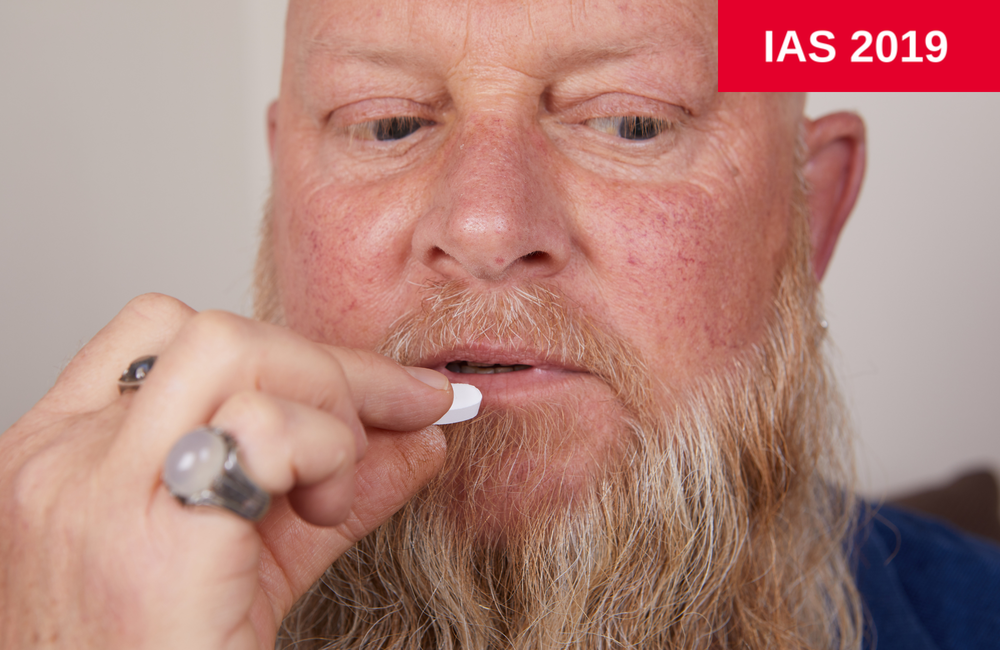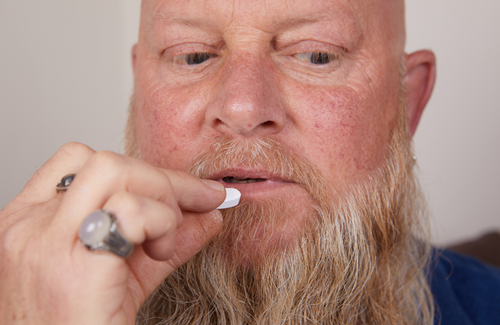
The proportion of people in the United States with extensive resistance to antiretroviral therapy (ART) and limited treatment options declined markedly after 2012, in large part thanks to the availability of potent new drugs, according to research presented to the 10th International AIDS Society Conference on HIV Science (IAS 2019) in Mexico City. Since 2012, only 1% of people who have taken ART have had extensive resistance.
Combination ART regimens first became available in 1996, transforming the prognosis for many people with HIV. However, many of the early drugs lacked potency. This meant that resistance could easily develop, especially if adherence to their often-complicated dosing regimens was less than perfect.
Since then, more powerful drugs less vulnerable to resistance, and with easy adherence schedules, have been developed, including boosted protease inhibitors such as darunavir and the integrase inhibitor class of anti-HIV drugs. New drugs for people with extensive resistance, such as ibalizumab, fostemsavir and leronlimab (PRO 140), have recently become available or are being studied.
A team of US investigators wanted to track changes in the proportion of ART-experienced people with antiretroviral resistance and limited treatment options ('heavily treatment experienced'). They examined data from between 2000 to 2017 for seven sites across the US enrolled in the Centers for AIDS Research Network of Integrated Clinical Systems.
'Heavily treatment experienced' people were defined as people who had taken ART and who, due to drug resistance, now had only two antiretroviral classes available to them, with no more than two viable drugs in each class.
The study population consisted of approximately 27,000 ART-experienced people. Most were male (81%); 43% were white and 41% black; and 53% were in the men who have sex with men HIV risk category. The median age was 46 years.
Prevalence of multidrug-resistance was a little over 5% at the start of the study, peaking at 7.5% in 2004. It then fell dramatically to just under 2% in 2007, before declining further, and between 2012 and 2017 was stable at approximately 1%.
People entering care in 2009-11 had an 80% lower risk of requiring multiple regimens and developing extensive drug resistance compared to those entering care in 2006-08 (aHR = 0.20; 95% CI, 0.09-0.42). Similarly, those entering care in 2012-2014 had a 76% lower risk than those entering care in 2006-08 (aHR = 0.76; 95% CI, 0.13-0.51).
The median nadir (lowest ever) CD4 cell count was just 71 cells/mm3 in those with extensive resistance, compared to 240 cells/mm3 in those without. People with extensive resistance had a median baseline viral load of just under 200,000 copies/ml, compared to just over 50,000 copies/ml in those without extensive resistance. Nadir CD4 and baseline viral load were significantly associated with a greater risk of developing extensive drug resistance, whereas neither changing treatment because of treatment failure nor the number of drugs ever taken were.
The investigators conclude that the prevalence of extensive drug resistance among ART-experienced patients was stable in the early ART era, declining after 2006-08 and falling to 1% in the contemporary treatment era. This pattern suggests that the decreases are indeed due to the introduction of new drugs with a higher barrier to resistance, leading to improvements in treatment and care.
Bajema K et al. Prevalence of heavily treatment-experienced persons with HIV in the United States, 2000-2017. Tenth International AIDS Society Conference on HIV Science (IAS 2019), abstract MOPEB246, 2019.
View this abstract on the conference website.
Update: Following the conference presentation, this study was published in a peer-reviewed journal:
Bajema K et al. Substantial decline in heavily treated therapy-experienced persons with HIV with limited antiretroviral treatment options. AIDS, 34: 2051-2059, November 2020.
doi: 10.1097/QAD.0000000000002679

